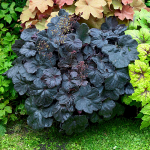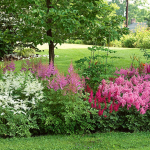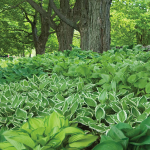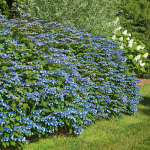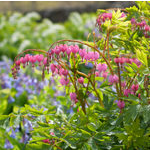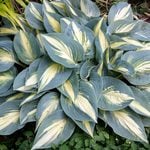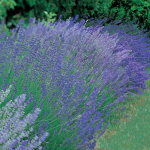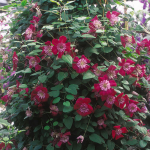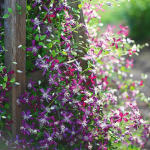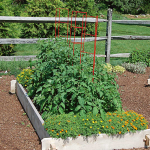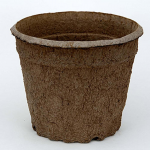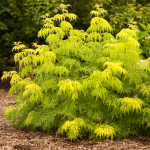Product Details
A Climbing Hydrangea, anomala subsp. petiolaris is a vigorous deciduous vine from Japan and Korea whose heart-shaped foliage and large white clusters of June flowers make it an attractive covering for a wall, fence, or large tree. It thrives in sun or shade (afternoon shade is required in the Deep South and in western Zones 9 and 10) and in moist but well-drained soil. Plants are slow to start, but the lateral branches extend as much as 3' and the vines will eventually grow to 40' or more. Winner of the RHS Award of Garden Merit.
Climbing Hydrangea plants have lateral branches that grow out as much as 3′ from the supporting structure, giving a rich, deep texture that is quite unlike that of other vines. The dried flower heads and reddish brown, peeling bark are attractive in winter. Produces aerial roots that cling to its support. Not well adapted to the dry heat of desert regions. Blooms on old wood.
Hydrangea is a valuable genus of some 100 species of shrubs and vines grown for their large and very showy flower heads. Hydrangeas are at their best in summer and fall—a quiet time for most woody plants—and are worth having for that reason alone. For more information on Hydrangea care, click on Growing Guide.
Shipping
HOW PLANTS ARE SHIPPED
The size of the plants we ship has been selected to reduce the shock of transplanting. For some, this means a large, bareroot crown. Others cannot travel bareroot or transplant best if grown in containers. We ship these perennials and annuals in 1 pint pots, except as noted. We must point out that many perennials will not bloom the first year after planting, but will the following year, amply rewarding your patience. We ship bulbs as dormant, bare bulbs, sometimes with some wood shavings or moss. Shrubs, Roses, vines, and other woody plants may be shipped bareroot or in pots. The size of the pot is noted in the quick facts for each item.
WHEN WE SHIP
We ship our bulbs and plants at the right time for planting in your area, except as noted, with orders dispatched on a first-come, first-served basis by climate zone. We also ship a wide range of containers and planters, tools, supplies, fertilizers, garden wear, garden decor items, as well as indoor decorations like wreaths and dried bouquets when available. Estimated dates for shipping are indicated in the green Shipping Details box for each item. Please supply a street address for delivery. Kindly contact us with two weeks notice, if you'll be away at the expected time of delivery.
OUR GUARANTEE
We guarantee to ship plants that are in prime condition for growing. If your order is damaged or fails to meet your expectations, we will cheerfully replace or refund it. Please contact our Customer Service Department at 1-800-503-9624 or email us at [email protected]. Please include your order number or customer number when contacting us.
Reviews
Average Customer Rating:
 (11 Reviews)
Write a Review
(11 Reviews)
Write a Review
Sort by:
Love these 
A viewer from Rome NY
Have also planted it on a heavy metal arbor and trim every year for forming it. It is gorgeous !
HEALTHY PLANT 
A viewer from GOLD COUNTRY, NORTHERN CALIFORNIA USA
2 of 2 people found this review helpful. Do you? yes no Certified buyer
Climbing Hydrangea is dramatic and useful. 
A viewer from Brunswick, Maine
Does not do well in dry heat 
A viewer from CA
9 of 10 people found this review helpful. Do you? yes no Certified buyer
Growing guide
Latin Name Pronunciation: hye-dran'jee-uh
Growing H. anomala petiolaris
Climbing Hydrangea (H. anomala petiolaris) will grow and flower even in a northern exposure. This large, heavy vine has lateral branches that will grow out as much as 3′ from the supporting structure. It is superb for growing up the trunk of large shade trees, walls, or along a stonewall. The reddish brown, peeling bark is attractive in winter. Although growth is slow the first couple of years after planting, this species is vigorous once established. Blooming usually begins in 3–5 years.
Light/Watering: Most varieties thrive in full sun in the North, but in the South require afternoon shade. Moist soils that do not dry out are best; do not plant in hot, dry, exposed sites. Mulch to conserve moisture and buffer soil temperatures.
Fertilizer/Soil and pH: Fertilize once in spring with a fertilizer designed to encourage blooms (such as 15-30-15). Soils should be moist but well drained, and rich in organic matter.
Pests/Diseases: None serious. Occasionally powdery mildew will infect the foliage, especially in humid areas with poor air circulation. Treat with an appropriate fungicide if the problem is serious, and be sure to rake up and destroy all fallen foliage in the autumn.
Pruning: Remove any dead wood in early spring. Prune as needed after flowering. Blooms on old wood.
Transplanting: Young plants may be transplanted when dormant in early spring. Prune top growth after transplanting to reduce water loss.
End of Season Care: Rake up and destroy any fallen foliage that was infected by powdery mildew or other fungi.
Calendar of Care
Early Spring: Prune as indicated above. Feed plants with a fertilizer high in phosphorus (such as 15-30-15) to encourage blooms. Complete any transplanting before leaves unfurl.
Mid-Spring: Mulch plants after soil has warmed to conserve moisture and buffer soil temperatures. Watch for powdery mildew and treat as needed.
Fall: Remove and destroy any fallen foliage that was infected by powdery mildew.
For more information on growing Hydrangeas, click here.

